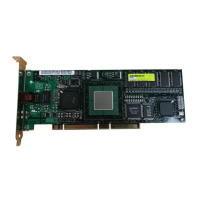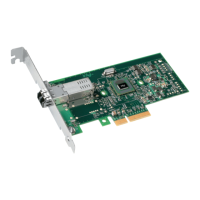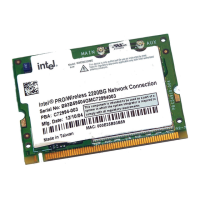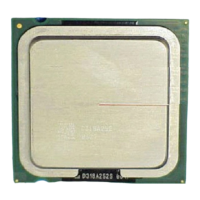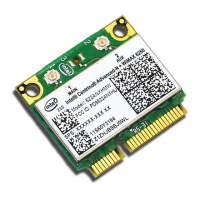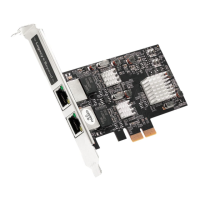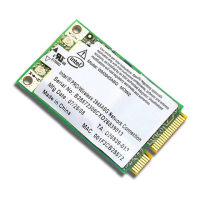1000BASE-T/100BASE-TX/10BASE-T Physical Layer Compliance Tests Manual
Intel Confidential 47
100Base-TX Rise and Fall Times
4. Locate the actual position of the peak voltage and the zero. Use the measurements from
Section 9 plus the actual zero and peak voltage measurements to calculate the 10% and 90%
voltage levels.
5. Zoom in on the positive waveform, expanding the rising edge of the wave so that it occupies as
much of the screen as possible. See example measurement in Figure 12-3.
6. Select the split-dot (vertical pair) cursors. Move one cursor to 10% of +V
OUT
on the rising
edge of the waveform and the other cursor to 90% of +V
OUT
on the rising edge as illustrated in
Figure 12-3 and Figure 12-4.
Note: The rise time is the difference in time (∆t) between the two markers.
7. Repeat steps 6 and 7 for positive fall time.
8. Record the results. Confirm that the rise and fall times are between 3.0 ns ≤ t
rise/fall
≤ 5.0 ns.
9. Repeat steps 3 through 9 for the negative-going waveform (Figure 12-5 and Figure 12-6) using
Table 12-2 to setup the oscilloscope.
10. Confirm that the difference between the maximum and minimum of all measured rise and fall
times is less than or equal to 0.5 ns.
11. Verify the measurements meet specifications.
Table 12-2. Setting for Negative Rise and Fall Times
Scope Parameter Setting
Horizontal Scale 1 ns/division or 0.5 ns/division
Vertical Range -1125 mV to +75 mV (1200 mV over the full vertical scale)
Trigger Type
Negative pulse width triggering:
116 ns lower bound, 128 ns upper bound
Trigger Level -500 mV
Record Length
Large enough to enable viewing of one complete MLT-3 (3-level)
waveform by scrolling horizontally
Display Type Average
Pulse Width Triggering
Triggering information is provided to give a good starting point for measurement. The
following guidelines will help the tester achieve the most stable display.
1. Set the trigger level to approximately 500 mV.
2. Select pulse width triggering.
3. Set the upper bound parameter to approximately 200 ns and the lower bound
parameter to approximately 116 ns.
4. Set the trigger mode to normal.
5. Increase the lower bound parameter gradually until the triggering is lost.
6. Decrease the lower bound parameter slowly in 5 ns increments until triggering
resumes.
7. Decrease the upper bound parameter until it is 5 ns to 15 ns above the lower trigger
bound parameter.

